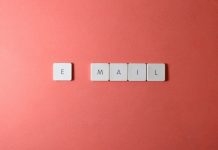Your email read rate calculates how many people actually read your email, instead of just opening it. Many marketers just track open rates and call it a date, but if your emails are opened and unread, you need to do some investigative work to find out why.
Why Do Mailbox Providers Measure Read Rates?
Mailbox providers often use read rate as a benchmark to gauge whether subscribers are interacting with messages or senders. Mailbox providers and subscribers use common indicators, such as bold sender name/subject line and a number of new messages, to identify unread messages. Once an email is selected, previewed, skimmed, or otherwise used, it won’t be bolded in the inbox, is considered read, and is removed from the new message count.
Reads are tracked by the recipient’s inbox activity and read duration (i.e. timeout). Like the aperture, there is an error with the readings. Because read metrics are based on inbox activity, there is a risk of reporting bias if subscribers manually mark messages as “read” instead of spending time in the message pane, previewing, or viewing the content of the message. What is a good email read rate?
Your read rate will be lower than your open rate. In general, you’ll want your read rates to be as close to your open rates as possible.
Calculate Your Email Read Rate
You can calculate your email read rate using a formula similar to the one you use to calculate open rates.
Email read rate = (Number of emails read / Number of emails sent) x 100
An Important Difference?
Marketers sending text-only emails can’t track open rates because you can’t embed images in text emails. An email client must display an image of an email in order to open it to be recorded. Additionally, marketers sending HTML emails cannot get email open rates when images are not enabled or displayed.
So the main difference is that read speed can capture information about subscribers who open their emails regardless of whether images are on or off.
What Is A Good Email Engagement Rate?
Your open rate and read rate can help determine your email engagement rate.
If your open rate is higher than the industry average and your read rate is close to your open rate, then you have a good email engagement rate. If your open rate is low and/or your read rate is significantly lower than your open rate, you have some improvements to make.
Ways To Amplify Read Rate For Email Campaign
Neither the open rate nor the read rate tells the whole story on their own. But the opening and the reading can be considered insightful directional indicators. Together, you can have a clearer view of how your subscribers choose to use your brand message.
Use Email Software To Track Read Rates
Email tracking tells you the exact date and time an email you sent was opened or clicked on. Email tracking software places pixel tags in emails to detect when someone has opened them. Determining when people engage with your emails is another great metric to keep in mind. A/B test
A/B testing helps you determine which emails and messages attract more interactions from your recipients. You can test different:
- subject line
- Call to Action (CTA)
- Times of the day
- Recipient Segment
…and more. Analyze your open and read rates every time to optimize your email campaigns.
Provide Value
The body of your email should contain helpful and personalized tips and information that your recipients want to know. If you spam your recipients with a bunch of irrelevant promotional emails and compelling CTAs, your open and read rates will drop and your consumers may end up unsubscribing (or worse). rather than complaining). Include relevant CTA
To improve email open and read rates, have a compelling CTA that clearly defines what the recipient’s next step is. Direct, straight to the point, and use colored buttons to make your CTA stand out.
Improve Delivery
The first step to increasing email KPIs is to make sure that your emails actually get delivered.
- Verify your email domain
- Maintain a clean subscriber list
- Optimize your membership process
- Avoid writing spammy subject lines (i.e. limit capitalization and emojis, and watch out for common spam trigger words)
- Send meaningful emails that people want to read
Final Thoughts
Measuring subscriber engagement will never go out of style, especially as it becomes an increasingly important deliverability factor. Not only do email marketers need to understand the difference, but they also need to regularly monitor open and read rates.













